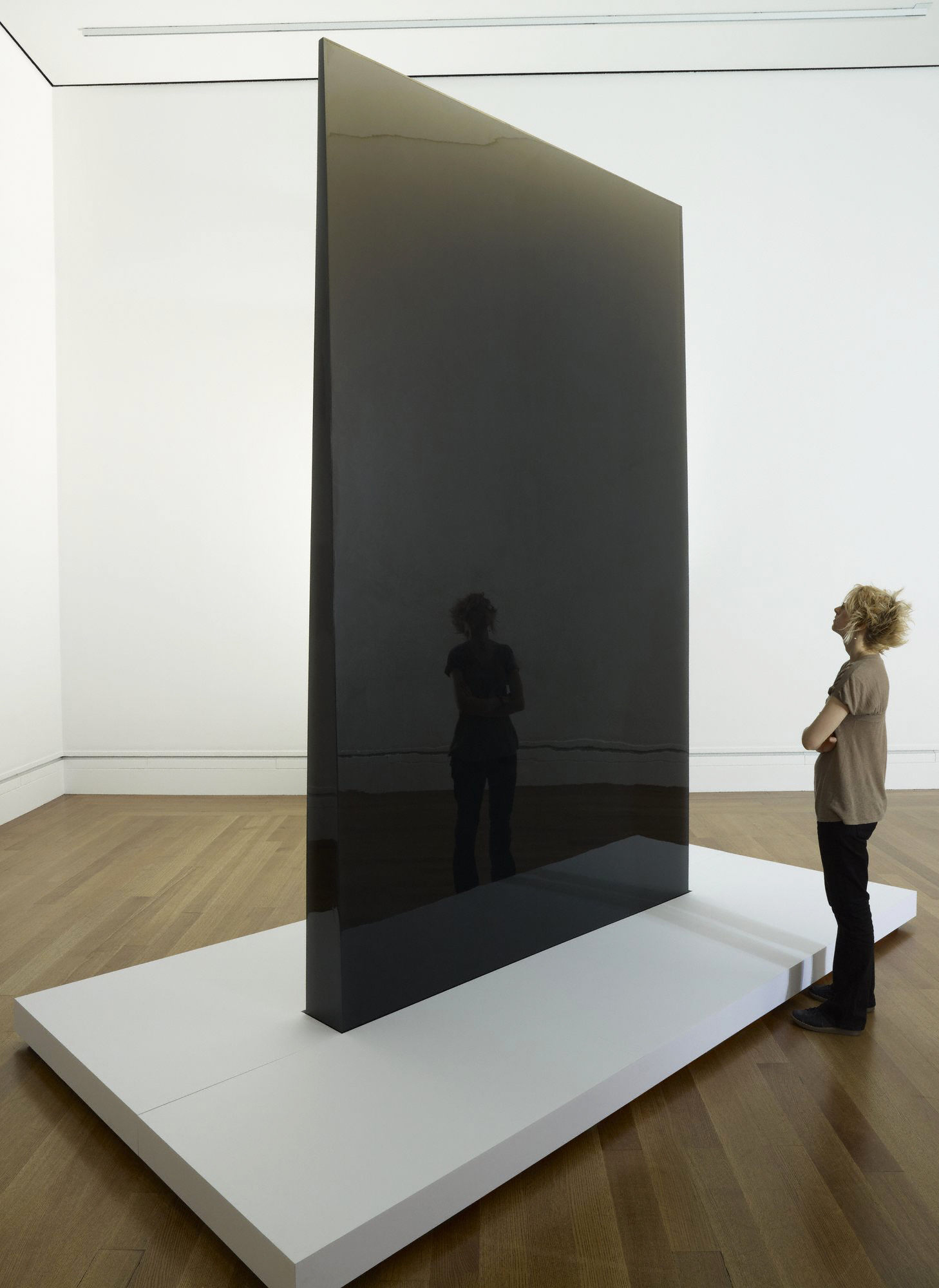“˜Gray Column’ at Getty Museum reflects De Wain Valentine’s lifelong fascination with plastics

De Wain Valentine’s creation stands tall at the J. Paul Getty Museum reflecting his fascination with light, the sky and the ocean. The exhibition is part of the “Pacific Standard Time” initiative, featuring works by L.A.-based artists. (Credit: Getty Museum)
"From Start to Finish"
Through Mar. 11
J. Paul Getty Museum, FREE
By Michael Palumbo
Sept. 13, 2011 11:49 p.m.
A visitor walking into the J. Paul Getty Museum’s new exhibition “From Start to Finish: De Wain Valentine’s Gray Column” will notice a quote from artist De Wain Valentine printed across the wall: “I would like to have some way, a magic saw, to cut out large chunks of ocean or sky and say “˜Here it is.'” In the center of the room stands the towering, prismatic sculpture known as the “Gray Column,” the form Valentine, who once taught at UCLA, chose to represent his vision.
According to Emma Richardson, co-curator of the exhibit, “Gray Column” encapsulates Valentine’s fascination with how the light refracts with the sky and the ocean.
“Valentine was greatly influenced by the water and the ocean, and also by the air and the sky and how it changes with light,” she said.
The Getty Museum unveiled “Gray Column” on Tuesday. The 12-foot-tall, 8-foot-wide sculpture is striking because the artist developed his own form of polyester resin to construct the piece, according to Tom Learner, lead curator of the exhibition and head scientist of the Modern and Contemporary Art Research at the Getty Conservation Institute.
The exhibition is part of the “Pacific Standard Time” initiative, in which more than 60 art institutions across Southern California will feature works by Los Angeles-based artists from around 1945-1980.
According to Learner, Valentine was one of the many prominent sculptors who created art from materials that were originally intended for industrial use, particularly polyester.
“When he first came to Los Angeles … polyester was something no artist was interested in using. But it could hold pigments of color and had beautiful, smooth surfaces, so he loved to work with the material,” Learner said.
Richardson said that the material was inherently difficult to work with because it is toxic and has a long curing process, meaning that it cracks easily when it hardens.
According to Learner, while Valentine was teaching a course in plastics technology at UCLA in 1965, he wanted to produce a resin in large volumes that wouldn’t crack from curing. He began working with Ed Revay, a representative from PPG Industries, and they discovered the Valentine MasKast Resin in 1966.
“Gray Column” was originally commissioned to feature two 12-foot columns that were supposed to be cut standing side by side. However, the building’s architect changed the floor plan so that the ceiling was lower than 12 feet high, and the columns had to be oriented to their sides so that they stood at 8 feet tall. The pieces were renamed “Two Gray Walls.”
As Learner and his team worked to restore the piece, they discovered once they erected the Gray Column that this was the first time the artist saw the column in its original orientation.
“We originally chose (“Gray Column”) because it was the largest piece that De Wain had ever done … but it was lovely to see his vision finally materialize,” Learner said.
Instrumental in bringing Richardson and Valentine together was Beau Ott, one of Valentine’s most active collectors. After meeting Richardson at an art gallery, Ott showed her Valentine’s work and explained his work with the resin.
According to Ott, Valentine had a fascination with plastics at an early age.
“Valentine was introduced to plastics in school, and was intrigued by it. He made jewel-like pieces in school and for him it was something new. (His fascination) never really left him,” Ott said.
“Gray Column” also serves as a platform to discuss certain issues of art conservation, especially because Valentine, now 75 years old, initially wanted the conservation team to remove all the scratches on the piece because he did not want the audience to fixate on only the surface, according to Richardson.
“From Start to Finish,” is an exhibition that shows both the artist’s and the curators’ journey in bringing the work to the public.
“(We grappled with) how to improve and polish the artwork, because the artist’s vision can change from one day to the next. We as conservationists want to maintain the artist’s hand,” Richardson said.


